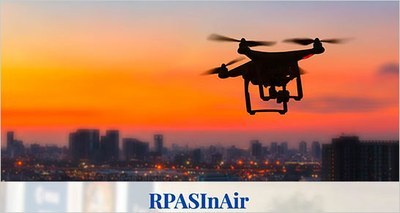Aerospace: Drones with innovative sensors for greater safety in air transport
1/8/2019
 Innovative sensors on drones, satellites and control towers to increase airspace safety and air quality forecasting models. This is what the project RPASinAir [1] funded with 8 million euro by the Ministry of Education, University and Research [2], involving ENEA as part of the Brindisi Aerospace Technology District [3] (leader), will carry out.
Innovative sensors on drones, satellites and control towers to increase airspace safety and air quality forecasting models. This is what the project RPASinAir [1] funded with 8 million euro by the Ministry of Education, University and Research [2], involving ENEA as part of the Brindisi Aerospace Technology District [3] (leader), will carry out.
The data collected by the sensors will be used to develop an air traffic management system capable of identifying elements of risk and soliciting appropriate procedures for prevention, mitigation and management of emergencies (floods, landslides, earthquakes or industrial accidents). The tests will be performed at the airport of Grottaglie (Taranto) [4] which will become an actual laboratory where to simulate operations before experimentation in the air space.
“The long-standing experience in the field of advanced environmental sensors of the ENEA Brindisi Research Center, jointly with the expertise of the ENEA Bologna Research Center on air quality forecasting modeling, will allow the development of terrestrial sensors and drones for outdoor and indoor air quality control, to study workloads of airport operators in stressful situations ”, Michele Penza, ENEA project contact person, pointed out.
Thanks to the forecasting modeling system with a resolution of 1 km, ENEA researchers will also be able to simulate air quality during trial campaigns and, with additional models, characterize the winds at the Grottaglie airport.
“With the involvement of the entire Apulian and national public-private research system, the project RPASinAir will attract new R&D initiatives and industrial investments, valorising the mission entrusted to the Grottaglie airport to serve as a testing ground for Aircraft Systems and Remote Pilotage (SAPR) and the first European Space Airport, strengthening the innovative capability of the national aerospace system, with growing trends due to positioning on international markets and employment repercussions ", Penza concluded.
In addition to ENEA, the CNR, INFN, Polytechnic University of Bari, Enna University and leading aerospace companies like Leonardo, Vitrociset, Telespazio, Planetek, Enginsoft, ENAV and Aeroporti di Puglia participate in the project.
For more information please contact:
Michele Penza, ENEA – Head Laboratory “Functional materials and Technologies for Sustainable Applications”, michele.penza@enea.it
[1] Integration of remotely piloted aircraft systems in non-segregated air space for innovative civil services
[2] PON Research and Innovation, National Research Plan (PNR) 2015-2020 - National Strategy for Smart Specialization (SNSI) of applied research
[3] Scarl Aerospace Technology District is a limited liability consortium company with the aim of supporting, through scientific and technological excellence, the attractiveness of investments in high-tech productive sectors, contributing to strengthen technical and scientific skills of partners, as well as the Apulian research system, nationally and internationally. ENEA holds 10.5% of the share capital.
[4]Considered of national interest and in support to research and industrial development by the National Airport Plan (MIT, 2016)
